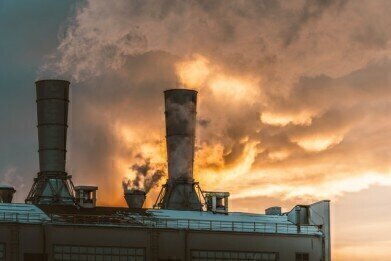Measurement and Testing
Where Does Hydrogen Come from for Fuel?
Apr 16 2022
Energy dense and emission free, hydrogen has exciting potential as the fuel of the future. While it’s one of the most abundant elements in the universe, it doesn’t exist in pure form and is instead bonded to other atoms, such as carbon and oxygen. To harness the energy-generating properties of hydrogen the chemical element must be separated from its bonded atoms. Read on for a closer look at how this is done.
Steam-methane reforming
Currently, most of the world’s hydrogen is generated from fossil fuels. Natural gas is the most widely used source, with a process called steam-methane reforming used to isolate hydrogen from other chemical elements. The process starts by using high-temperature steam alongside a catalyst to generate a reaction. This produces hydrogen, carbon monoxide and carbon dioxide.
Next, the steam and catalyst react with the newly produced carbon monoxide to trigger what the Office of Energy Efficiency & Renewable Energy calls a “water-gas shift reaction.” This generates hydrogen, as well as additional carbon dioxide. Finally, a stage known as "pressure-swing adsorption" is used to purify the hydrogen and remove carbon dioxide and other contaminants. While natural gas isn’t the only fuel used to produce hydrogen, it’s by far the most common.
A new era of electrolysis
Electrolysis, a term that describes the process of splitting water using electricity, is rapidly gaining momentum as an alternative hydrogen production method. Unlike steam-methane reforming, it doesn’t require natural gas or release carbon dioxide as a by-product. Instead, powerful units called electrolysers are used to split H20 into hydrogen and oxygen. When the electricity used to power electrolyser units is renewable, hydrogen has a zero-emission footprint.
The UK is at the forefront of the low-carbon hydrogen movement, with the government pledging to roll out support contracts for electrolytic projects by 2023. Under the new policies, “low-carbon hydrogen” must not exceed more than 2.4kg of CO2 per kilogram during the production process. This includes upstream emissions.
The transition to "green" hydrogen
In 2022, sustainability consultancy firm Environmental Resources Management is moving forward with a project to develop wind-powered hydrogen production stations in the Celtic Sea. Known as Dolphyn, the project could help the UK meet its carbon targets and generate 100% green hydrogen. By 2065, the firm estimates Dolphyn hydrogen could replace 50% of gas used to power homes and businesses in the UK.
Want to know more about hydrogen as a fuel source? From the elemental structure of hydrogen to the advent of Fuel Cell Electric Vehicles (FCEVs), we cover all bases in ‘Everything You Need to Know About Hydrogen Fuel.’
Digital Edition
PIN 25.1 Feb/March
March 2024
In This Edition Safety - The technology behind the ION Science Tiger XT - Safety with ammonia and LOHCs as hydrogen carriers Analytical Instrumentation - Discussion on new tribology te...
View all digital editions
Events
Apr 28 2024 Montreal, Quebec, Canada
Apr 30 2024 Birmingham, UK
May 03 2024 Seoul, South Korea
May 05 2024 Seville, Spain
May 06 2024 Riyadh, Saudi Arabia


















